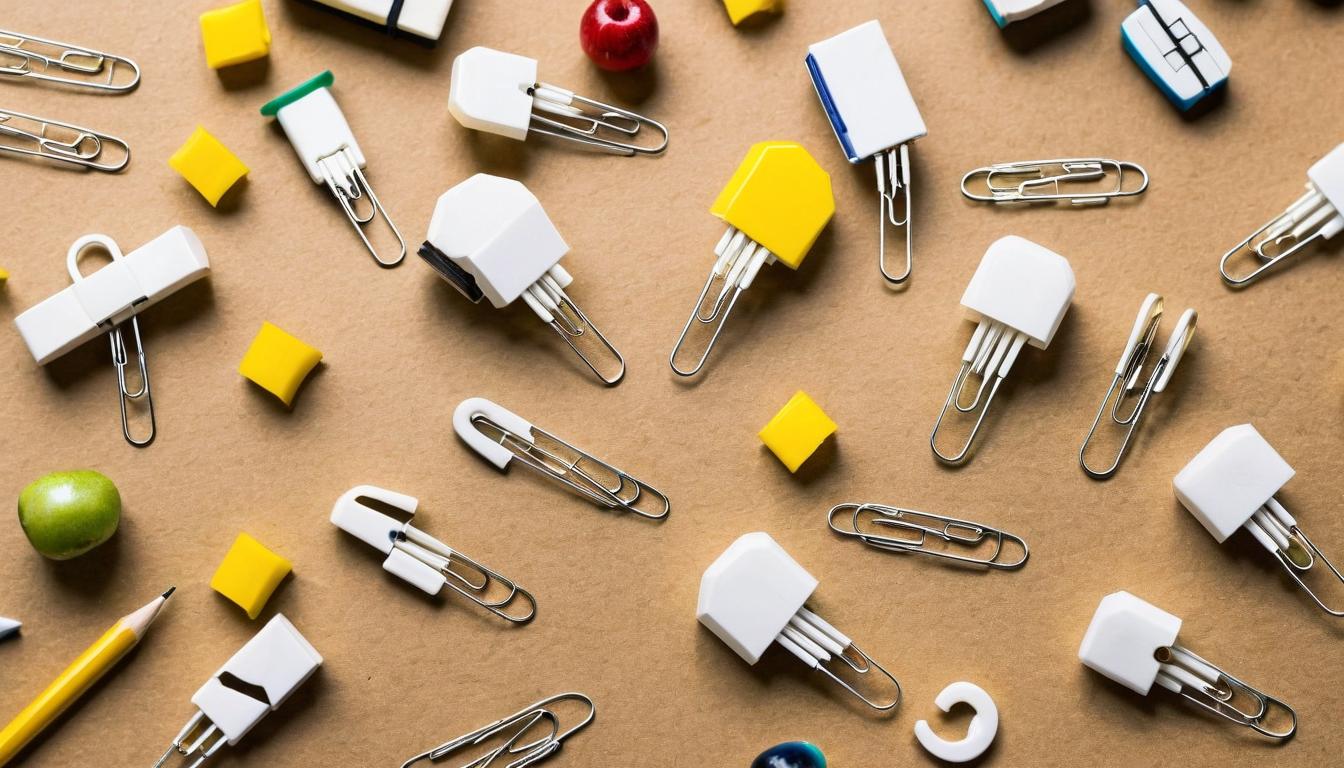There's a secret world hiding in plain sight, one that exists in the most mundane corners of our daily lives. The objects we interact with every day—from the humble paperclip to the smartphone in your pocket—contain stories and scientific marvels that would make even the most jaded observer pause in wonder. These aren't just manufactured items; they're time capsules of human ingenuity, accidental discoveries, and sometimes, pure serendipity.
Consider the paperclip, that simple bent wire we've all used to organize documents. Its origins trace back to the late 19th century, but what few realize is that during World War II, Norwegians wore paperclips on their lapels as silent protests against Nazi occupation. The humble office supply became a powerful symbol of resistance, demonstrating how ordinary objects can carry extraordinary meaning. The design itself is a marvel of functional simplicity—able to hold dozens of sheets without damaging them, yet easily removable.
Then there's the story behind Post-it Notes, one of the greatest accidental inventions of the 20th century. In 1968, 3M scientist Spencer Silver was attempting to create a super-strong adhesive when he accidentally developed a weak, reusable pressure-sensitive adhesive instead. For years, this 'failed' invention sat unused until another 3M scientist, Art Fry, struggling to keep bookmarks in his hymnal during choir practice, remembered Silver's adhesive. The result revolutionized office communication worldwide.
Our smartphones contain elements that are literally stellar in origin. The gold, silver, and platinum in your device were forged in the cataclysmic explosions of dying stars billions of years ago. Every time you hold your phone, you're touching material that traveled across the universe to reach you. The average smartphone contains about 75 different elements—nearly two-thirds of the entire periodic table—mined from locations spanning six continents before being assembled into the device in your pocket.
Even something as simple as bubble wrap has a fascinating backstory. Originally invented in 1957 by engineers Alfred Fielding and Marc Chavannes, it was intended to be textured wallpaper. When that market failed to materialize, they repositioned it as greenhouse insulation before IBM began using it to protect delicate computer components during shipping in 1960. The satisfying pop sound occurs because the air trapped inside rushes out at speeds approaching the speed of sound when the bubble collapses.
The modern zipper took over 20 years to perfect. While Whitcomb Judson patented the 'clasp locker' in 1893, it was Gideon Sundback who refined the design between 1906 and 1913, increasing the number of fastening elements from four per inch to ten or eleven. The name 'zipper' came from the B.F. Goodrich Company in 1923 when they used Sundback's device on their new rubber boots. For years, zippers were considered inappropriate for men's clothing because they made undressing too easy.
Ballpoint pens revolutionized writing, but their journey to reliability was fraught with failure. Hungarian journalist László Bíró, frustrated with fountain pens, noticed that newspaper ink dried quickly and didn't smudge. Working with his brother György, he developed a new tip design and viscous ink that wouldn't leak. The British Royal Air Force immediately recognized its potential for high-altitude writing where fountain pens would leak, ordering 30,000 units during World War II.
The QR code, those square patterns we now scan with our phones, contains hidden patterns that help scanners orient themselves properly. The three distinctive squares at the corners allow scanning from any angle, while the alternating black and white modules around the perimeter help correct for distortion. Originally developed in 1994 for tracking automotive parts, QR codes can store up to 7,089 digits compared to a barcode's 20, making them incredibly versatile for modern applications.
Even the lowly rubber band has surprising complexity. Most are made from natural rubber tapped from rubber trees, primarily grown in Southeast Asia. The process involves scoring the tree bark and collecting the latex that drips out, which is then treated with acid to make it solid before being molded into bands. During World War II, when rubber supplies were critical, the US government even asked citizens to donate their spare rubber bands for the war effort.
The microwave oven emerged from radar technology research during World War II. Engineer Percy Spencer noticed that a candy bar in his pocket had melted while he was standing near an active radar set. He experimented further by placing popcorn kernels near the magnetron tube, and when they began to pop, he realized he'd discovered a new cooking method. The first commercial microwave oven stood nearly six feet tall and weighed over 750 pounds.
Velcro, the hook-and-loop fastener we use everywhere from shoes to space stations, was inspired by nature. Swiss engineer George de Mestral returned from a hunting trip in 1941 covered in burdock burrs. Examining them under a microscope, he discovered the tiny hooks that allowed them to cling so tenaciously to fabrics and fur. It took him eight years to perfect the synthetic version, combining the French words for velvet (velour) and hook (crochet) to create the name Velcro.
These stories remind us that innovation often emerges from unexpected places—failed experiments, wartime necessities, natural observations, and sometimes pure accidents. The most revolutionary ideas frequently begin as solutions to minor problems or happy accidents that someone had the vision to recognize as significant. In our rush toward the future, it's worth remembering that the objects we take for granted contain entire histories of human creativity and persistence.
The hidden lives of everyday objects and the surprising science behind them

